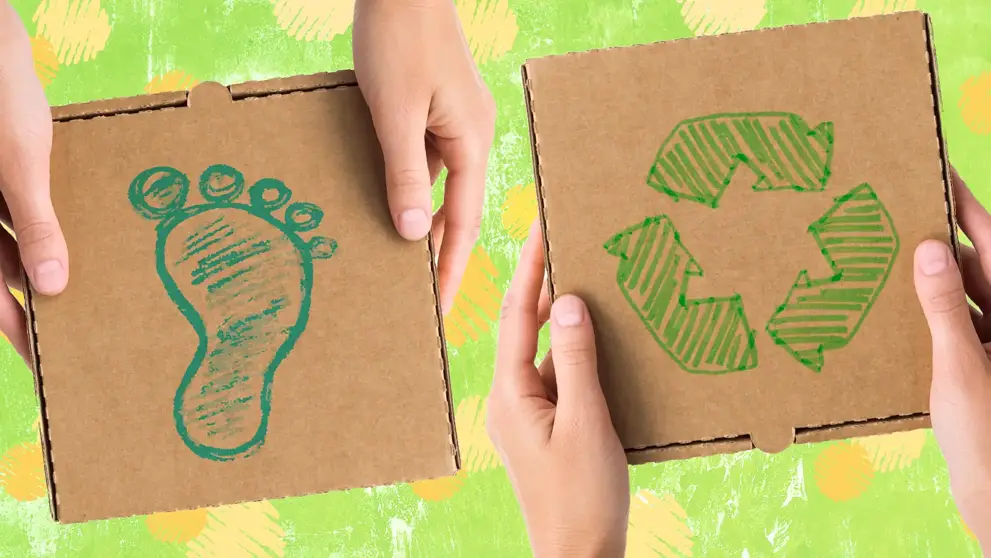Green logistics strategies can help your business lower its emissions, reduce waste, and attract more customers. Here’s where to begin.
What is green logistics?
When we talk about logistics, we mean everything from procurement, warehousing and distribution to transportation, packaging and risk management. Green logistics (or “sustainable logistics”) is all about reducing the environmental impact of these processes. For example, if you run an e-commerce business, you might use electric vehicles for last-mile deliveries, or switch to sustainable packaging to do your part for the planet.
Why is sustainability important in the supply chain?
Making your supply chain more sustainable through green logistics is essential for a few key reasons that directly affect you and your business.
First, it helps to reduce your environmental impact. It stands to reason that your company's logistics contribute to its greenhouse gas emissions, pollution, and waste. So greening your supply chain can help to minimize your overall carbon footprint.
Second, it can save you money. By focusing on reducing energy use across your organization, you'll notice a decrease in your operating costs.
And third, it can improve how people see your business. More and more consumers are looking for brands that are committed to sustainability, and adopting green logistics could boost your brand image and help build customer loyalty.
Benefits of green logistics to your business
Environmental benefits
Lowers emissions
By adopting green logistics, you can lower your emissions with alternative fuels, electric vehicles, and more efficient transportation routes all in the mix. You can also make your warehouses more energy-efficient with energy management systems, reducing your business’s overall carbon footprint.
Reduces waste
When you focus on green logistics, you’re reducing waste at every step. This can mean optimizing your packaging, recycling, and reusing materials, or adopting better waste disposal methods. Not only will this help the environment, but it can also cut costs on waste disposal and material consumption.
Economic benefits
Lowers packaging costs
Switching to sustainable packaging – often made from recycled or biodegradable materials – can actually be cheaper than traditional options. By optimizing your packaging design and using fewer materials, you can lower your overall logistics costs and still protect your products during shipping. Plus, it’s something your eco-conscious customers will appreciate.
Reduces transport costs
Green logistics promotes sustainable transportation ideas like route optimization, load consolidation, and using fuel-efficient vehicles. These approaches can lower your fuel consumption and transportation expenses. For instance, using advanced route planning tools can help you find the most efficient delivery routes, saving you money on fuel and time on the road.
Organizational benefits
Improves operational efficiency
Green logistics often involves streamlining processes, cutting out unnecessary steps, and using resources more wisely. While some sustainable changes, like installing solar panels, might require an upfront investment, the long-term savings and increased operational efficiency make it worthwhile.
Saves time
When your logistics operations are more efficient, you’re able to fulfill orders faster, cut down on delivery times, and respond to customer needs more quickly. Integrating sustainable transportation methods, like real-time tracking or automated inventory systems, can make your business run smoother and save valuable time that you can put back into other areas.
By adopting eco-friendly principles, you’re not only helping the planet – you’re also setting up your business for long-term success, savings, and happier customers
Enhances your brand reputation
Sustainability is a powerful influence on customers' buying decisions. According to DHL’s 2023 Global Online Shopper Survey, over 70% of consumers say sustainability matters when they shop online, and nearly half would wait longer for their deliveries if it helped the environment.
Your customers now expect eco-friendly logistics practices from your business. Offering sustainable packaging is a good start, but it's not enough on its own. To meet their expectations, you should develop a thorough green logistics strategy. And you're in the right place to get started!
Challenges in trying to achieve sustainability in supply chain management
While the benefits of sustainable logistics are clear, there are also some challenges that you need to be aware of.
Cost
Implementing sustainable practices can sometimes require upfront investments in new technologies or processes. However, these investments often pay off in the long run through reduced operating costs and improved efficiency.
Complexity
Supply chains are complex systems with many moving parts. It can be difficult to track the environmental impact of every stage of the supply chain. However, there are a number of tools and resources available to help you assess and improve your sustainability performance.
Collaboration
Sustainable supply chain management requires collaboration between everyone involved, including suppliers, manufacturers, retailers, and consumers. This can be a challenge, but it is essential for achieving meaningful progress.
Data
Accurate and reliable data is essential for measuring and tracking progress on sustainability goals. However, many businesses lack the necessary data collection and analysis capabilities. This is an area where technology can play a key role in enabling you to make more informed decisions about your supply chain operations.
Green logistics strategies to adopt
So, which green logistics strategies can you use to reduce your carbon footprint, boost efficiency, and improve profitability? Here are a few to consider.
Think circular
Returns are inevitable in e-commerce. But when products come back, what’s next? Instead of reselling or disposing of them, explore different options. The circular economy’s model of logistics management encourages sharing, repairing, refurbishing, and recycling materials to reduce waste. A reverse logistics strategy can move your business toward this model, helping you meet your sustainability goals, and giving your customers more control over how their returns are managed.
Collaborate with your suppliers
From the materials your products are made of to the packaging they arrive in, it’s likely there are opportunities to switch to greener options. Talking to your suppliers can help you explore alternatives, such as sustainable materials or biodegradable packaging.
Research from McKinsey found products with ESG-related claims on their packaging outperformed those without. Just be wary of 'greenwashing' – all your claims must be genuine if they are to resonate with your customers.
Transform your transport
Optimize space during the transport process by packing your products smartly into correctly-sized boxes – this will allow you to group packages into fewer vehicles.
And try to minimize failed deliveries, which are a huge contributor to your carbon footprint as every unsuccessful attempt clocks up more vehicle emissions (and costs).
With On-Demand Delivery (ODD), you can reduce your failed delivery rate, by allowing customers to choose exactly when and where their deliveries are made – to a neighbor perhaps, or a parcel locker, or an alternate address (such as their workplace) if they know they're not going to be at home. Offering ODD not only improves your first-time delivery rate, but your customers enjoy a more convenient service too, which builds loyalty to your brand. Win win!
Invest in technology
With AI-enabled route planning software, you can map out the quickest, most efficient delivery routes, saving time and reducing your environmental impact.
How DHL can help
DHL is on a mission to achieve net-zero logistics-related emissions by 2050. With solutions like GoGreen Plus, they’re setting a global example in green logistics. In 2022, they offset over 2 million tons of CO2 emissions through GoGreen Offsetting and added more than 28,000 electric vehicles to their fleet. Their Green Logistics Toolkit is a valuable resource for helping your business make a real impact.
DHL GoGreen Plus
DHL GoGreen Plus allows businesses like yours to neutralize carbon emissions by using Sustainable Aviation Fuel (SAF). This cleaner, eco-friendly alternative to conventional jet fuel helps reduce your carbon footprint, showing your commitment to sustainable shipping.
DHL GoGreen Offsetting
DHL GoGreen Offsetting enables you to offset your carbon emissions by investing in certified climate protection projects that focus on renewable energy generation, reforestation, and energy efficiency improvements. By investing in GoGreen Offsetting, you can contribute to global climate action and showcase your dedication to environmental sustainability.
DHL GoGreen Optimization
DHL GoGreen Optimization uses data analytics and advanced algorithms to consolidate shipments improve route efficiency and reduce fuel consumption. In high-density urban areas where traffic congestion is a concern, GoGreen Optimization can contribute significantly to your green logistics goals.
When you open a DHL Express Business Account, you’re taking an important step towards a greener future. A sustainable business leads to happier customers and a happier planet.



























